A Revolution in Speaker Design
Apart from new cabinet finishes and better drivers speakers have fundamentally not changed.
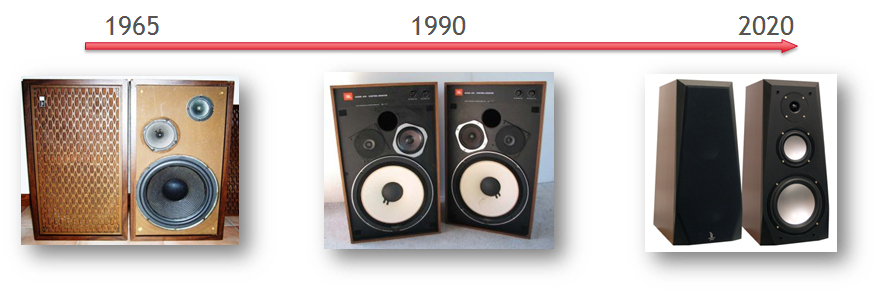
The Grimani Systems Audio packages are the most refined high SPL loudspeaker package available in the industry to day. Suitable for rooms up to 560 cubic metres, these packages are capable of filling larger screening rooms with sound that is at once dynamic, accurate and nuanced in ways that even good audiophile loudspeakers cannot achieve. This is a result of proprietary technologies and techniques, like their Conic Section Array™ waveguide. Installation and setup is a fraction of that required by conventional solutions.
Why?
In cinema sound we need to provide as consistent an experience as possible to all seats. In larger rooms especially, many of those seats can be significantly off-axis to one or more speakers. People in those seats miss out on some of the high frequency content. But it gets worse.
So far, we’ve only talked about the sound that goes directly from the speaker to the listener’s ear. Speakers radiate sound in all directions. What about the sound energy that goes from the speakers and bounces off the walls, floor and ceiling before getting to the listener?
Turns out those reflections are really important to the human auditory system. Without getting too technical, they make recordings sound more “real.” When those reflections, which create the ambient tone of a room, are deprived of high frequency content, whether by the speaker or improper room acoustics, the experience of the listener is significantly compromised. All too often, BOTH of these problems exist, and yeah, it gets worse…
In cinema sound, we have requirements for higher sound pressure levels (SPL) than in most normal music listening environments. Movie sound tracks can have extreme dynamic range. Higher SPL can help us “get into” the movie. In rooms that are larger or where the client has a desire for particularly high SPL, loudspeakers can get put under extreme stress. To cope with this, speakers designed for cinema use are designed to be more robust.
At higher frequencies, horns are used to increase efficiency. They accomplish high SPL in part by–you guessed it–beaming energy even more narrowly! This is what you have to do if you have to play loudly. No matter how expensive or what it’s made of, the 1” dome tweeter found in most hi-fi speakers simply cannot push enough air to achieve the sound pressure levels we require. It gets even worse, though.
At lower frequencies, to meet the requirement for high SPL, special drivers are used for the woofer and midrange. “Special driver” translates to woofers and midranges that are more efficient and handle more power – virtually always at the expense of distortion and smoothness of overall frequency response. Also, midrange drivers for cinema are frequently over sized for robustness. This brings the beaming problem down even lower in frequency – to the vocal range.
In case you’ve ever wondered, these are the major reasons why PA speakers don’t sound like hi-fi speakers, and why people say things like, “Speakers for movies are not as good for music.” But, there is a solution…
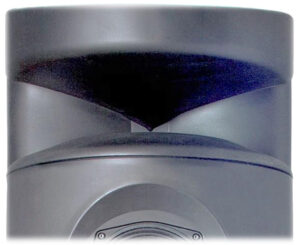
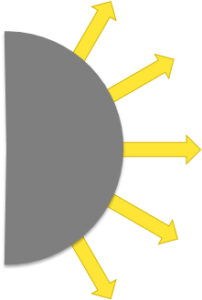
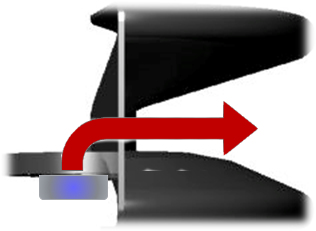
Conic Section Array™
Developed by Grimani Systems founder Manny LaCarrubba, the Conic Section Array™ (CSA) is a novel waveguide that represents a new class of ultra-wide dispersion device. Danish consumer electronics company Bang & Olufsen utilises this design.
What these waveguides do is solve the age-old problem that all conventional high frequency drive units have with the beaming high frequency content in an ever increasingly narrow coverage angle. This means that you can only hear full frequency content if you are directly in front of the speaker (or nearly so). It’s important to realize that ALL loudspeakers exhibit this behavior to some degree –Acoustic Lenses or a Conic Section Array™ GREATLY mitigate the problem.
The Conic Section Array waveguide delivers constant horizontal directivity over a 160-degree coverage angle. Even at extreme off axis angles of 70 or 80 degrees, there is no roll-off of high frequencies. Outfitted with a high quality compression driver, we are able to bring a level of performance that even well designed audiophile loudspeakers cannot attain, but at sound pressure levels no audiophile speaker could ever achieve.
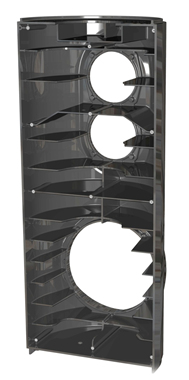
Speaker Technologies
‘Golden Ratio’
While making an enclosure with no parallel sides is possible. The vast majority of speakers use conventional parallel sides, front and back, top and bottom. This is governed by aesthetic looks that the public is used to. and expect. But ideally an enclosure that has no parallel sides. This decreases the chance of cabinet resonance also can be defined as a standing wave. Typical modern speaker manufacturers use a sound absorption materials to cancel standing waves in the cabinet. Grimani systems utilise cabinets that do not incorporate any parallel sides. Thereby enhancing the performance of the speaker cabinet.
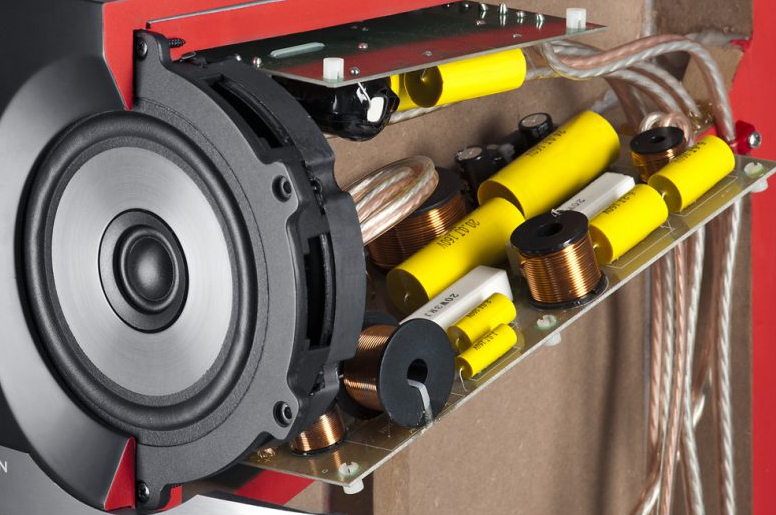
What is a speaker crossover?
The speaker crossover is a passive component hidden within just about every loudspeaker. Aside from these specialized technologies, it’s generally true that every loudspeaker with more than one driver in its enclosure requires a crossover.
As its name suggests, a crossover is where the unfiltered audio signal is divided according to a predefined upper or lower threshold. The speaker crossover supplies each driver with the signal range it was designed to best reproduce. For example, crossovers ensure that tweeters only receive the highest frequencies, not any of the lower ones this driver was not designed to reproduce. This makes a crossover something akin to a loudspeaker’s central nervous system. The issue with this is these crossovers can use up to 50% of an amplifiers output, thereby reducing the overall speaker performance
Grimani Speakers do not use Passive Crossovers
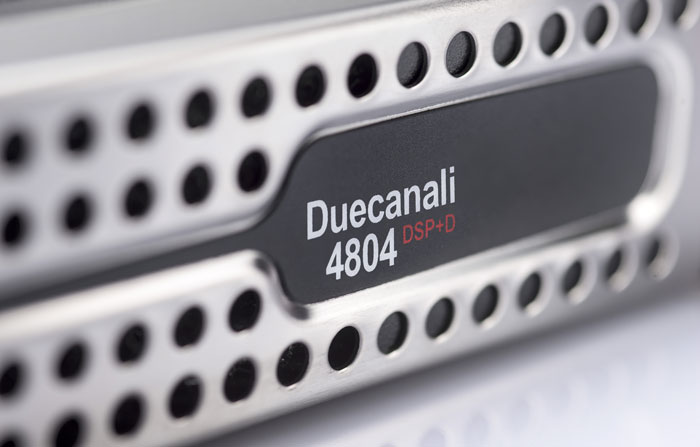

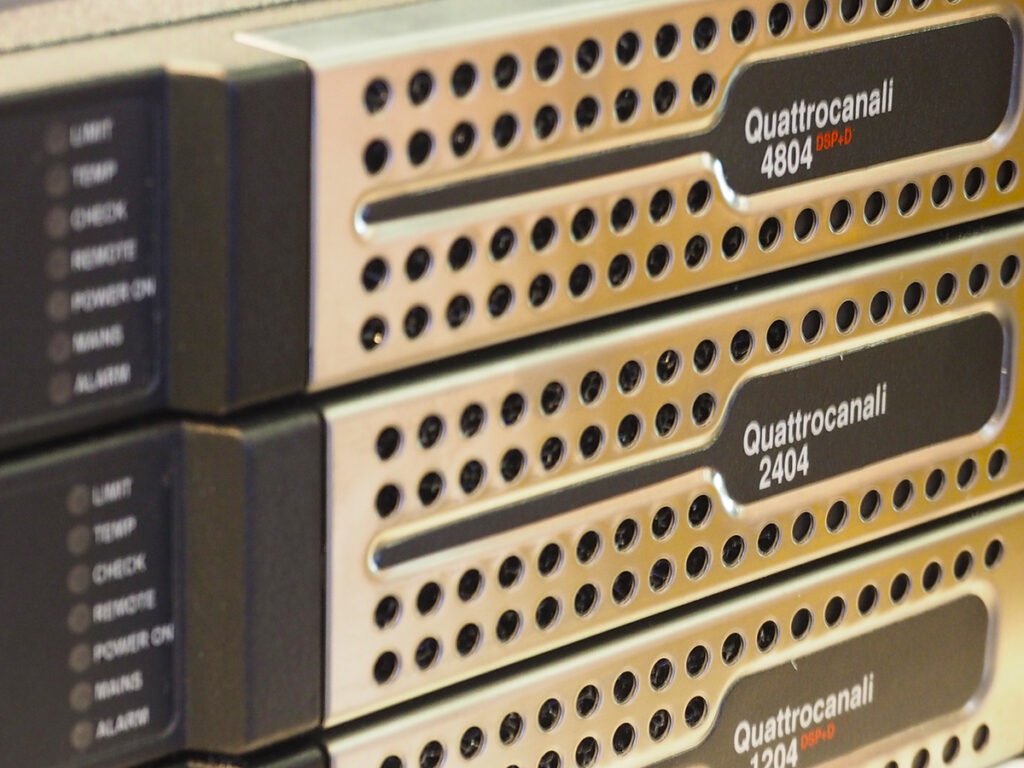
PowerSoft Amplification
All Grimani systems come with out board Powersoft amplifiers. These are professional grade amplifiers employing the latest technologies with built in digital DSP and crossovers. This allows the sound being delivered to the speakers to be individually tailored to each individual rooms based on room constructions and size. Each amplifier can be monitored off site allowing adjusts to the clients requirements.
Mindful of environmental issues, switch mode power supplies enable the Powersoft amplifiers to be fitted inside a 1U enclosure
Quattrocanali amplifiers are available in both DSP and non-DSP versions, both fully remote controllable via standard GPI/O connections on the rear panel, Powersoft’s Armonìa, dedicated web app or third-party application. This provides access to all functions from a decentralised location, further reducing the need for personnel on station. The fully-customisable interface seamlessly integrates all devices in one easy-to-manage screen.
Remote access to Powersoft amplifiers is available both through standard Cat5 cabled and wi-fi networks, via laptop, PC, tablet or smartphone. Quattrocanali’s architecture may also be trusted in mission-critical applications where sound clarity and intelligibility are paramount, by exploiting the GPI/O connections.
Non-DSP versions of Powersoft amplifiers offer control over channel and master volume; mute; fixed high-pass filters at 35Hz and 70Hz; remote on/off via dedicated GPI inputs; remote system alarms via GPO outputs; and channel and master volume via GPI/O dedicated ports.
DSP+D Versions of the Quattrocanali feature full compatibility with Ottocanali and X Series amplifier platforms, offering control via Armonìa of four Dante input channels; channel and master volume; mute; remote on/off; crossovers; limiters; equalisers; delays; active damping control and signal routing.
